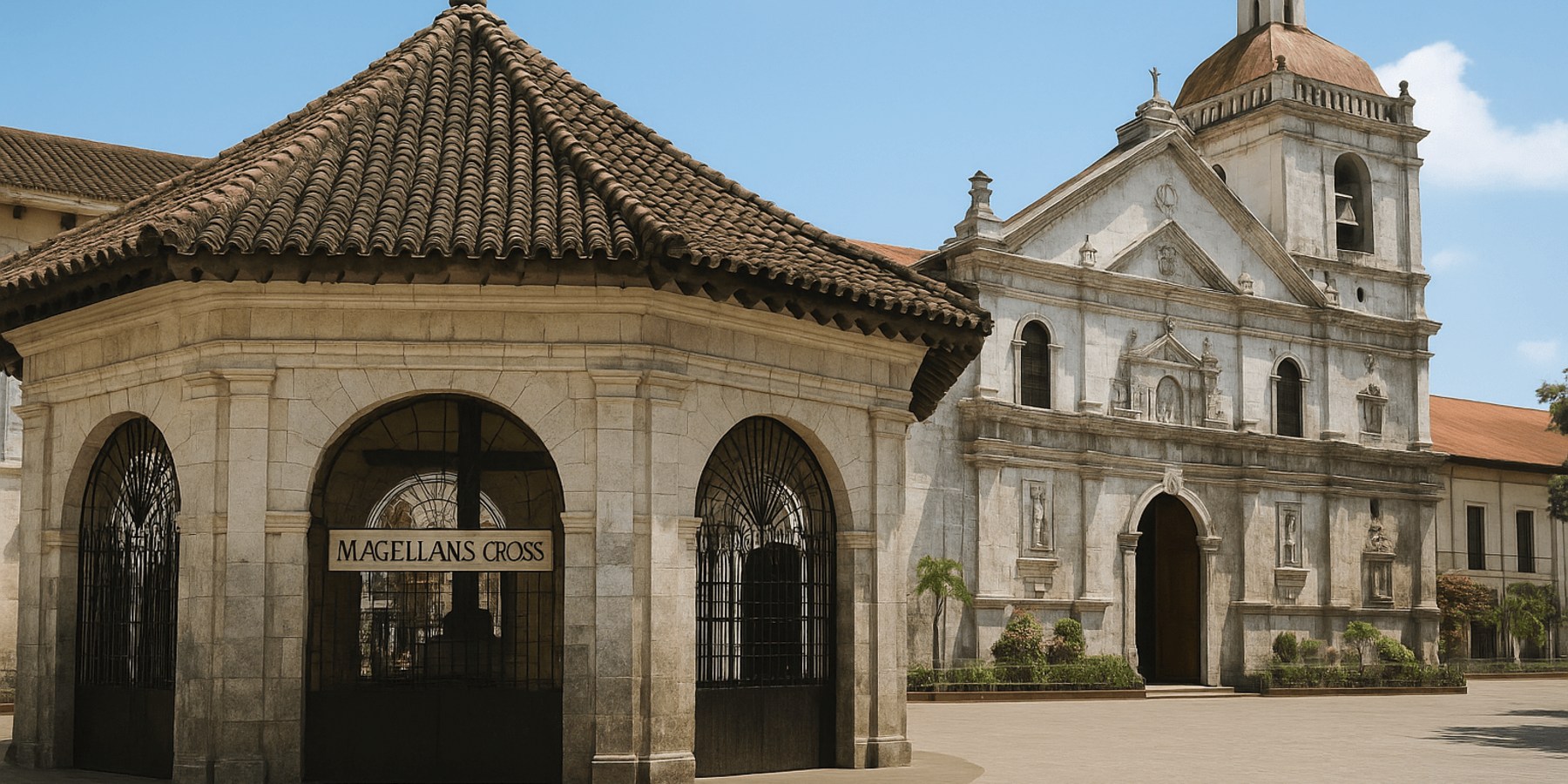
Cebu is the cradle of Understanding
Cebu’s Spanish Heritage:
A Tour Guide’s Historical Insight
Cebu is the cradle of Christianity in the Philippines, and its streets, plazas, and ancient stone structures echo more than 500 years of Spanish influence. As a local tour guide who has walked these heritage sites for decades, I have witnessed how profoundly Cebu’s identity has been shaped by the arrival of Spain in 1521. This article explores the most important landmarks, the stories behind them, and their influence on Cebu today.
1. Magellan’s Cross: The Beginning of a New Era
Magellan’s Cross marks the exact spot where Portuguese explorer Ferdinand Magellan, under the Spanish crown, planted a wooden cross in 1521. This symbolized the introduction of Christianity to the islands. Today, the kiosk-shaped pavilion protects the original remnants, and tourists can witness its powerful historical presence. Inside, a large mural depicts the first baptism and the conversion of Rajah Humabon and Hara Humamay.
2. Basilica Minore del Santo Niño: The Oldest Church in the Philippines
Right beside Magellan’s Cross stands the Basilica Minore del Santo Niño, founded in 1565. It houses the revered Santo Niño — a gift from Magellan to Cebu’s Queen in 1521. The church has survived fires, earthquakes, and wars, yet remains a deeply sacred symbol of faith. Its basilica status and long-standing traditions make it one of the most visited pilgrimage sites during the Sinulog Festival.
3. Fort San Pedro: Cebu’s Oldest Triangular Fortification
Built by Spanish conquistador Miguel López de Legazpi, Fort San Pedro is the oldest and smallest triangular fort in the Philippines. Originally constructed from wood and later rebuilt in stone, this military fortress protected Cebu from pirates and foreign invaders. Today, its coral-stone walls and peaceful gardens offer travelers a glimpse into early Spanish military life.
4. The Influence on Language, Culture, and Daily Life
Spanish rule introduced Catholic faith, town plazas, architecture, education, and political systems still seen today. Many Cebuano words have Spanish roots, and traditions such as fiestas, processions, and local governance trace their origins to this era.
5. Cebu’s Heritage Today
Despite modernization, Cebu remains a living museum of its colonial past. From street names to stone churches, the Spanish influence is visible everywhere. More importantly, Cebuanos continue to preserve these traditions with pride, keeping the stories alive for future generations.
Conclusion
Understanding Cebu’s Spanish heritage is essential to appreciating its identity. These landmarks are not merely tourist spots — they are living witnesses to centuries of history, faith, and transformation. As a Cebu tour guide, I am honored to share these stories with travelers who seek to understand the heart of Cebu.

